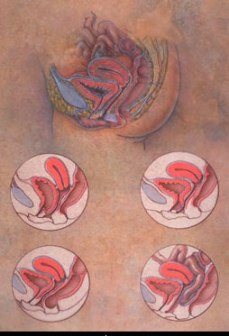Can you imagine your bladder can fall into vagina? Whenever the protective wall between your bladder and vagina weakens by any means, then it will possibly allow your bladder to droop into the vagina.
This particular condition of prolapsed bladder is commonly known as cystocele and it can cause severe discomfort for you and you can often face various problems with this emptying of bladder.
A bladder which has drooped from its original position can majorly cause two different problems.
One is unwanted leakage of urine and the other can be incomplete emptying of the bladder.

For some women, a fallen bladder typically stretches the opening into urethra and leads to urine leakage whenever they sneeze or cough or even when they laugh.
Pregnancy and child birth can possibly cause cystocele!
The pelvic floor of women mainly consists with a sheet of muscles and ligaments which can actually acts as support for your bladder, colon, uterus and all other organs which will mainly cover your pelvic cavity. When these supporting muscles or tissues stretches or becomes weak, certain internal organs of your pelvic cavity tend to sink lower into your vagina.
Most of the women, who have experienced pregnancy and child birth, can mostly suffer with cystocele. This is due to the reason that the muscles and ligaments, which acts as support for your pelvic organs, can become much weaker and stretched during your labor and delivery periods. For this particular reason, cystocele becomes more common in women who had experienced multiple pregnancies.
In fact, it doesn’t actually mean that every one who has had a baby can possibly develop cystocele. Most of the women can have very strong pelvic muscles and ligaments. Those women who only experienced caesarean section for their deliveries are at much reduced risk of developing cystocele in their lifetime.
Certain self-care measures to manage cystocele!
These are certain self care measures, which can help you to prevent the cystocele from worsening. Some of the most effective measures can significantly include:
- Avoid lifting heavy objects and try to keep yourself within a healthy range of weight.
- Try to increase your intake of fiber diet in order to prevent constipation and also straining of muscles.
- Try to practice abdominal muscle exercises in order to strengthen the muscles of your pelvic cavity and also try to avoid regular sit-ups.
- Practice pelvic floor workouts and improve the strength of your pelvic muscles. Never try on your own. Try to take appropriate advice from an efficient physical trainer.
- Even, kegel exercises are also considered as most successful ways to strengthen your pelvic muscles. So, try to know more about these specific workouts for your pelvic muscles.
As already said, never try on your own. Seeking better attention from an experienced physical trainer and also considering the advice of your general physician can help you to prevent further complications in your life.






